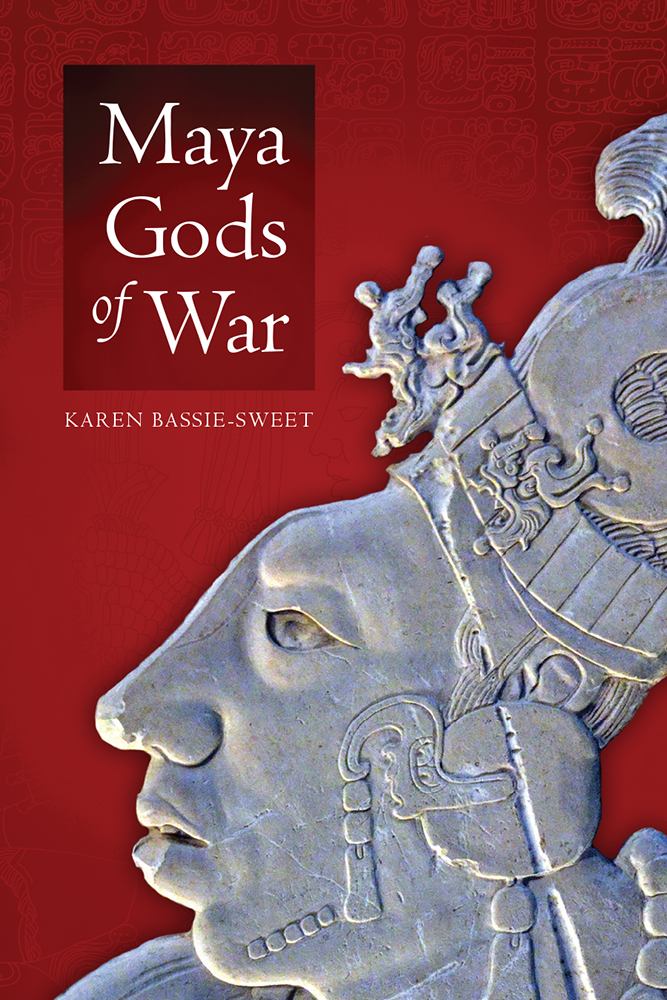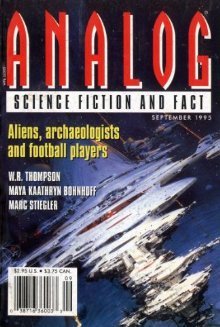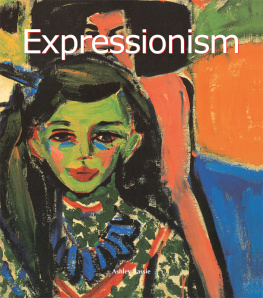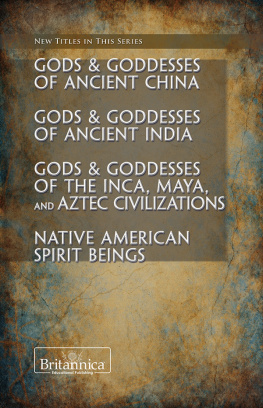Karen Bassie-Sweet - Maya Gods of War
Here you can read online Karen Bassie-Sweet - Maya Gods of War full text of the book (entire story) in english for free. Download pdf and epub, get meaning, cover and reviews about this ebook. year: 2021, publisher: University Press of Colorado, genre: Religion. Description of the work, (preface) as well as reviews are available. Best literature library LitArk.com created for fans of good reading and offers a wide selection of genres:
Romance novel
Science fiction
Adventure
Detective
Science
History
Home and family
Prose
Art
Politics
Computer
Non-fiction
Religion
Business
Children
Humor
Choose a favorite category and find really read worthwhile books. Enjoy immersion in the world of imagination, feel the emotions of the characters or learn something new for yourself, make an fascinating discovery.

- Book:Maya Gods of War
- Author:
- Publisher:University Press of Colorado
- Genre:
- Year:2021
- Rating:4 / 5
- Favourites:Add to favourites
- Your mark:
- 80
- 1
- 2
- 3
- 4
- 5
Maya Gods of War: summary, description and annotation
We offer to read an annotation, description, summary or preface (depends on what the author of the book "Maya Gods of War" wrote himself). If you haven't found the necessary information about the book — write in the comments, we will try to find it.
Maya Gods of War — read online for free the complete book (whole text) full work
Below is the text of the book, divided by pages. System saving the place of the last page read, allows you to conveniently read the book "Maya Gods of War" online for free, without having to search again every time where you left off. Put a bookmark, and you can go to the page where you finished reading at any time.
Font size:
Interval:
Bookmark:

Karen Bassie-Sweet
U NIVERSITY P RESS OF C OLORADO
Louisville
2021 by University Press of Colorado
Published by University Press of Colorado
245 Century Circle, Suite 202
Louisville, Colorado 80027
All rights reserved
 The University Press of Colorado is a proud member of the Association of University Presses.
The University Press of Colorado is a proud member of the Association of University Presses.
The University Press of Colorado is a cooperative publishing enterprise supported, in part, by Adams State University, Colorado State University, Fort Lewis College, Metropolitan State University of Denver, Regis University, University of Colorado, University of Northern Colorado, University of Wyoming, Utah State University, and Western Colorado University.
ISBN: 978-1-64642-131-2 (hardcover)
ISBN: 978-1-64642-132-9 (ebook)
https://doi.org/10.5876/9781646421329
Library of Congress Cataloging-in-Publication Data
Names: Bassie-Sweet, Karen, 1952 author.
Title: Maya gods of war / Karen Bassie-Sweet.
Description: Louisville : University Press of Colorado, [2021] | Includes bibliographical references and index.
Identifiers: LCCN 2021003574 (print) | LCCN 2021003575 (ebook) | ISBN 9781646421312 (hardcover) | ISBN 9781646421329 (ebook)
Subjects: LCSH: Maya gods. | Maya mythology. | Warfare, Prehistoric. | Weapons, Ancient.
Classification: LCC F1435.3.R3 B375 2021 (print) | LCC F1435.3.R3 (ebook) | DDC 355.02dc23
LC record available at https://lccn.loc.gov/2021003574
LC ebook record available at https://lccn.loc.gov/2021003575
Illustrations: Palenque Temple XIX pier Yajawkak headdress, photo by Karen Bassie-Sweet (front); Palenque Tablet of the Slaves, drawing after Merle Greene Robertson (background).
For Rick and Nick, my yin and yang
Genealogy chart
Chajom titles: a. Yaxchiln Throne 2, b. Quirigu Stela J, c. K1440
Palenque Temple XXI bench
Usumacinta stela
Chajom headdress: a. La Corona Panel 1, b. Yaxchiln Lintel 43
El Cayo Altar 4
Dos Pilas Stela 2
Aguateca Stela 2
Tikal Bone MT-39
Yaxchiln Stela 1
Palenque Temple XIX platform
Yaxchiln Lintel 8
Yaxchiln Lintel 16
Yaxchiln Lintel 12
Yaxchiln Stela 10
Laxtunich wall panel
Piedras Negras Stela 12
Portraits and nominal glyphs for the deity GI: a. stone mask, b. Early Classic incensario, c. portrait glyph, d. nominal phrase
Kawiil in the form of thunderbolt axe
a. T528 tuun sign, b. witz sign, c. witz motif
a. hi sign, b. kan tuun motif
a. flint signs, b. personified flint signs, c. flint centipede
Yaxchiln Lintel 45
Palenque Temple XVII
Copn Margarita Structure panel
Dumbarton Oaks Tablet
a. T24 sign, b. T1017 sign, c. Kawiil gods
K4013
K8608
La Pasadita Lintel 2
K2772
a. T122 sign kak fire sign, T1035 kak fire sign, b. Early Classic axe
T44 tok spark sign on Yopaat portrait glyph
Palenque Tablet of the Foliated Cross
Seacal vessel
Temple of Inscriptions sarcophagus lid
Lacanha Panel 1
Dresden Codex page 26
War shield featuring portrait of GIII, Palenque Tablet of the Sun
K1892
a. T544 sun glyph, b, c. Sun God, d. kin cartouche
Sun God K1398
Dawn glyph, Copn Structure 66c bench
Dawn glyph, Copn Group 10K-4
Palenque Tablet of the Cross
Yaxchiln Four Crocodile House
a. GIII portrait glyph, b. GIII nominal phrase
Palenque Group B incensario
Tikal canoe scene
Naranjo Stela 30
Palenque Tablet of the Sun
Yaxchiln Lintel 41
Teotihuacn warrior with obsidian blade headdress and obsidian weapon
a. T712 chab sign, b. u chab u akab couplet, c. u chab u akab conflated signs
Personified obsidian spear heads, Piedras Negras Stela 7 and Stela 8
Copn Stela 6
Tlaloc portraits
Yaxchiln Stela 35 front
Tlaloc with Waxaklajuun Ubaah Kan leg, Copn Structure 26
a. Acanceh Waxaklajuun Ubaah Kan, b. Acanceh stucco facade, c. K1350 Waxaklajuun Ubaah Kan
Naranjo Stela 2
Yaxchiln Lintel 41 spear, Xiuhcoatl
Trapezoid motif, Copn Structure 26
a. Jaguar glyph, b. jaguar claw and jaguar glyph, c. hix, d. puma
Hix jaguar, vessel K771
Tlaloc jaguar, Palenque Group B medallions
Tlaloc jaguar, Palenque Group B medallions
Waxaklajuun Ubaah Kan, K8266
Piedras Negras Stela 8
Naranjo Stela 19
La Corona Panel 6
Copn Rastrojon puma
Teotihuacn Lepidoptera, Cleveland Museum of Art mirror
Palenque looted panel
Lepidoptera Tlaloc, K4644 and Dzibilnocac plate
Black Witch Moth
a. o owl, b. sky glyph, c. cave glyph, d. katun glyph, e. Muwaan glyph
Piedras Negras Stela 9 bundle
Owl Tlaloc, a. vessel K8504, b. Acanceh owl, c. K8121
Lepidoptera Tlaloc, vessel K6809
Atetelco mountain place name and Piedras Negras Stela 9 Owl Tlaloc
Piedras Negras Stela 7
Piedras Negras Stela 26
a. T583 sign, b. janaab owl, c. and d. T932 pakal sign, e. T583T932 conflation (T624), f. Janaab Ti O glyph
Owl incense bag, Palenque Temple XIX jamb
Kaloomte logographs
Tikal Stela 31 front
Museo VICAL vessel
Tikal Marcador
a. Tikal Marcador glyphs, b. Tikal Marcador medallion, c. Tikal Marcador medallion
a. Teotihuacan lechuza y armas, b. Tikal Stela 31 medallion (drawing after Christopher Jones)
Spearthrower Owl name and Piedras Negras Stela 9 Tlaloc Owl wing
Tikal Stela 31 back
Copn Altar Q
Wiintenaah place name
Palenque Palace Tablet scene
Palenque Palace Tablet text
Palenque Oval Palace Tablet
Piedras Negras Panel 2
Piedras Negras Stela 40 top
Piedras Negras Stela 40 bottom
Bonampak Stela 3
Palenque Temple XIX pier Yajawkak headdress
Palenque Tablet of the Slaves
Tonin Monument 27 and Panel Mp49
La Corona ballplayer
Yaxchiln Lintel 24
Yaxchiln Lintel 17
Yaxchiln Lintel 25
Yaxchiln Structure 21 mural
Yaxchiln Stela 35 back
God L Temple of the Cross right jamb
K511
K2796
This study focuses on the Classic period deities of the Maya region that were associated with weapons of war and sacrifice, as well as the flint and obsidian from which those implements were made. The Classic period terms for flint and obsidian were tok and taj (Proto-Mayan *tyooq and *tyaah), respectively (Kaufman 2003:442). These two types of stones were the most common material used to make axes, hammers, lancets, knives, spears, darts, and arrows as well as utilitarian tools. Flint and obsidian were also knapped into exotic shapes nicknamed eccentrics that had ritual purposes. The use of flint and obsidian debitage in caches and elite burial contexts was common, and this speaks to the sacred nature of these stones (Ricketson and Ricketson 1937; Coe 1959; Moholy-Nagy 2008). The Maya area has four broad geographic zones: the Pacific coastal region, the highlands, the Maya Mountains of Belize, and the lowlands. The highlands consist of a volcanic southern region and a metamorphic northern region. A karst platform dominated by limestone bedrock forms the lowlands. Flint (a sedimentary cryptocrystalline form of quartz) is found in limestone formations, while obsidian (volcanic glass) only occurs in the volcanic regions of the highlands of Guatemala and Mexico. During the Classic period ( AD 250900), the three primary obsidian sources of Guatemala in descending order of importance were El Chayal, Ixtepeque, and San Martn Jilotepeque. Obsidian from these sites has been recovered across the Maya lowlands and attests to the importance of this highland trade commodity. Though in small quantities, Central Mexican obsidian, particularly the superior green obsidian from the Pachuca sources that were controlled by Teotihuacn in the Early Classic period, was also present in the Maya lowlands and even appeared at highland Guatemalan sites that had easy access to local sources.
Next pageFont size:
Interval:
Bookmark:
Similar books «Maya Gods of War»
Look at similar books to Maya Gods of War. We have selected literature similar in name and meaning in the hope of providing readers with more options to find new, interesting, not yet read works.
Discussion, reviews of the book Maya Gods of War and just readers' own opinions. Leave your comments, write what you think about the work, its meaning or the main characters. Specify what exactly you liked and what you didn't like, and why you think so.








